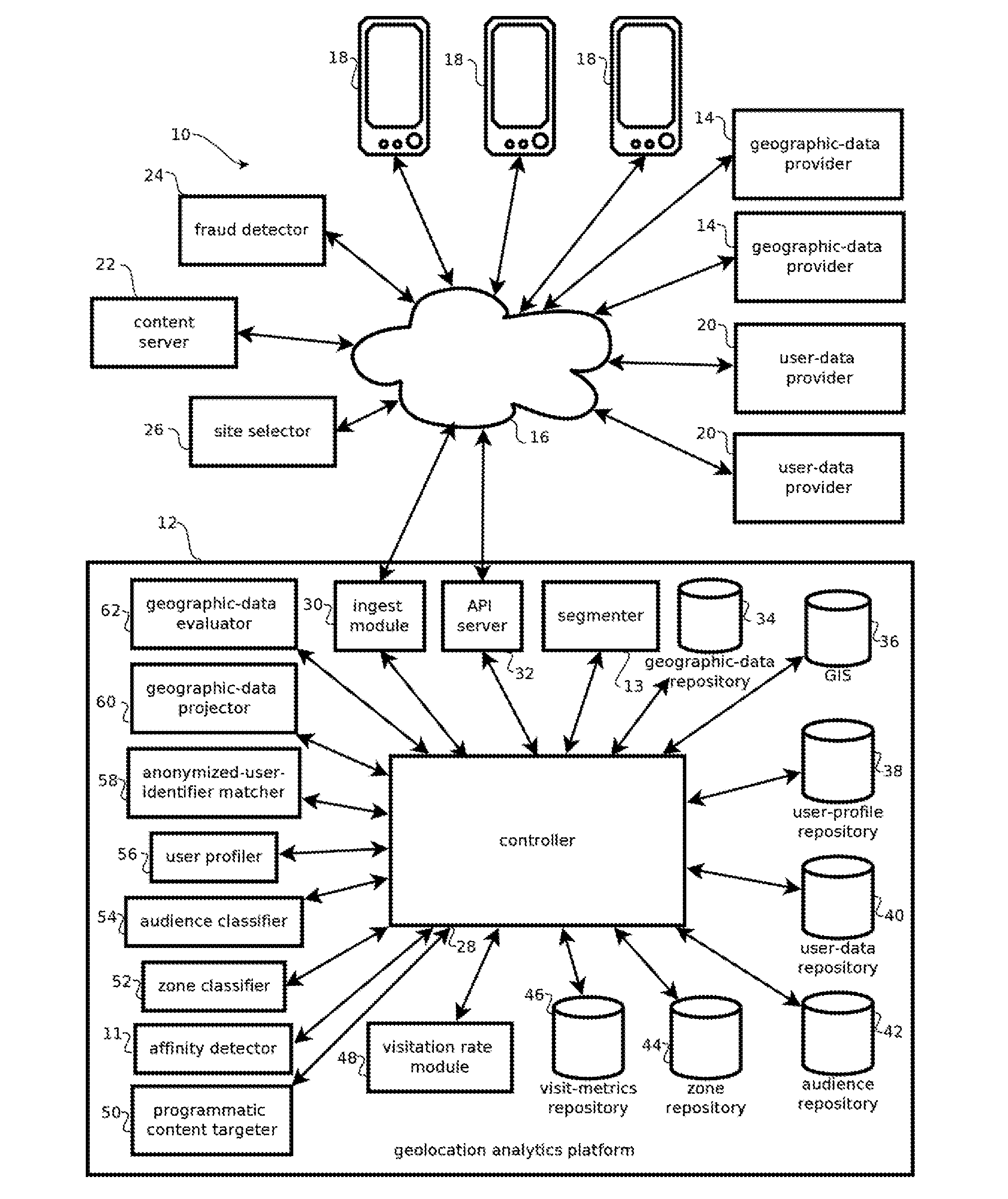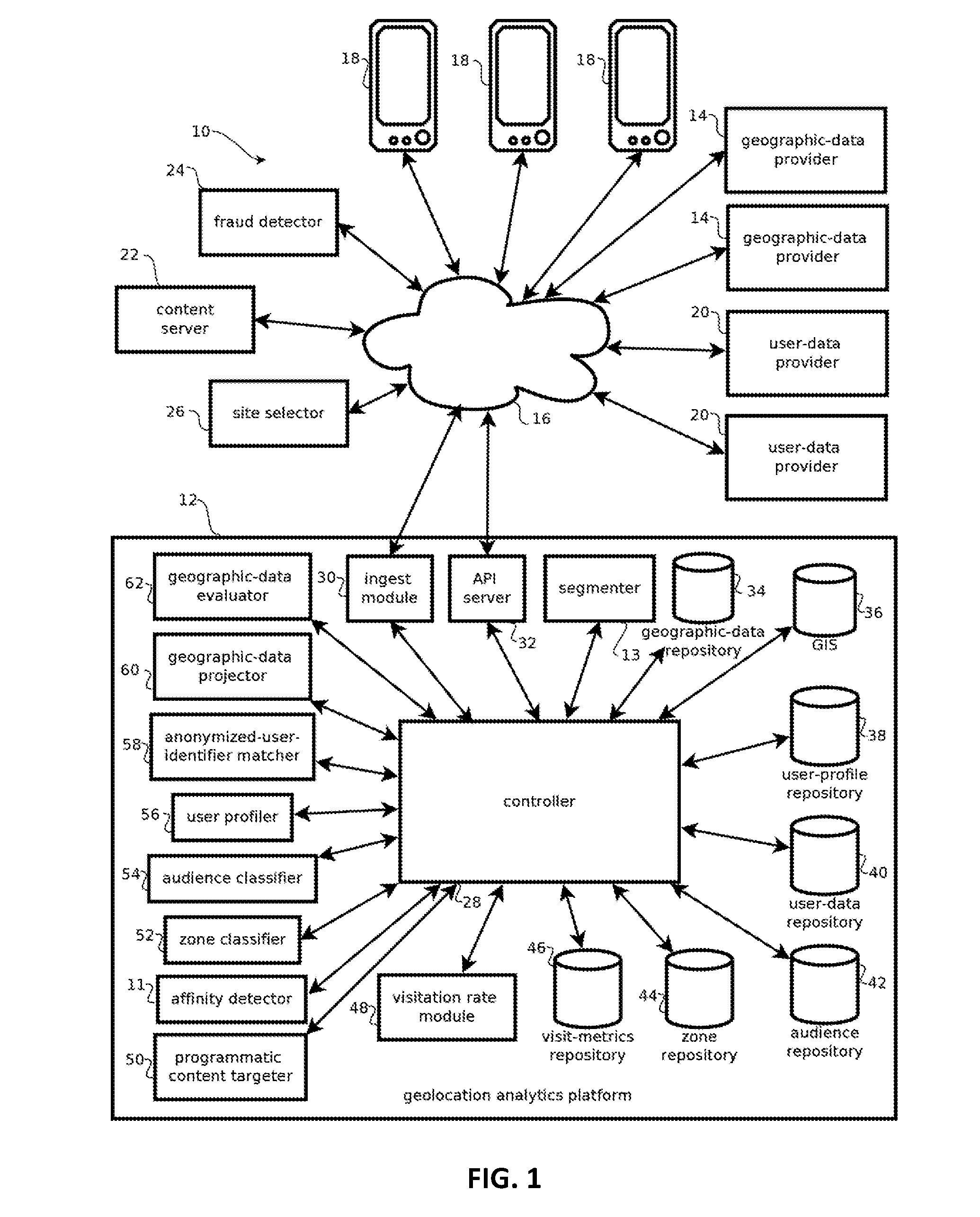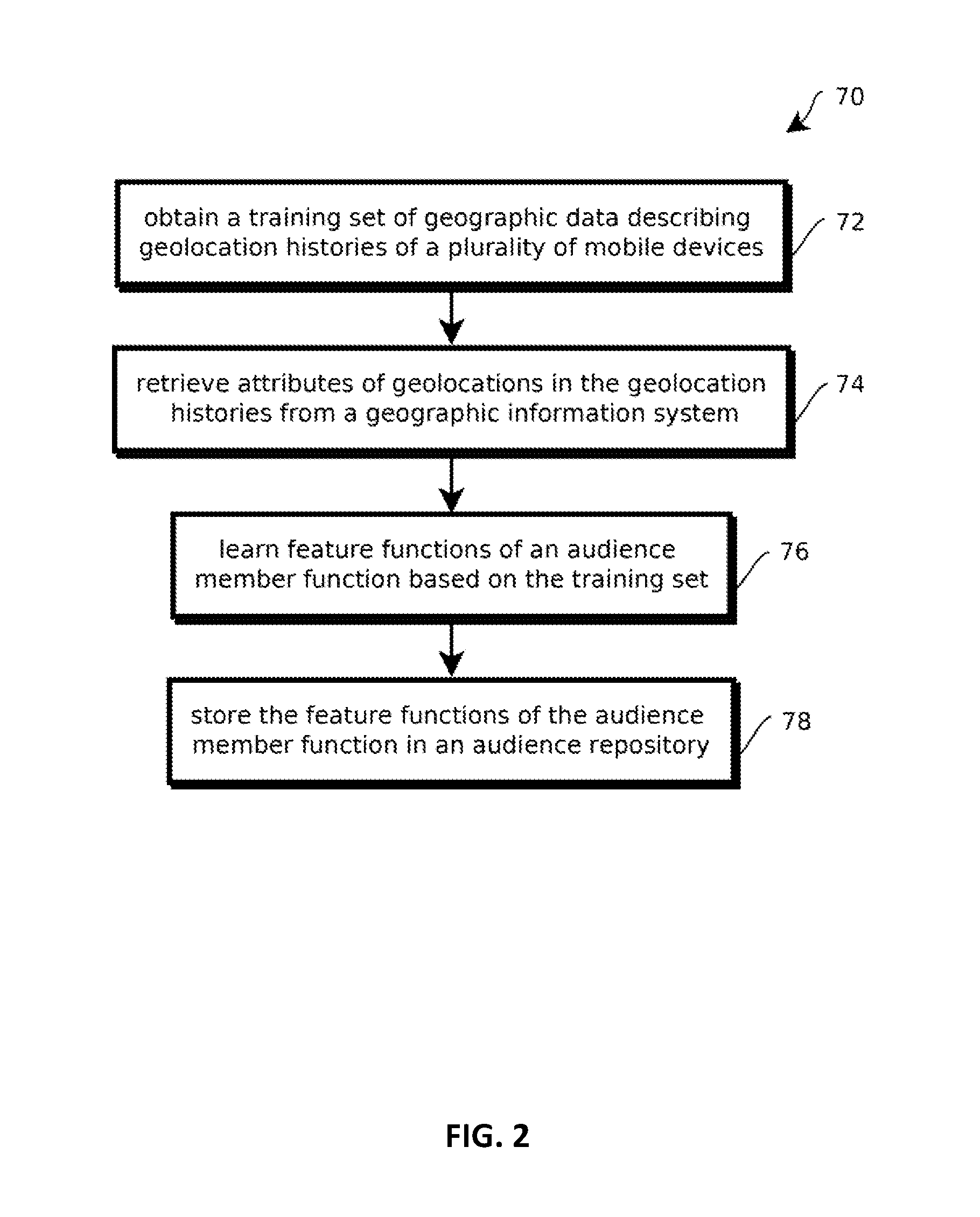Analyzing consumer behavior based on location visitation
a location visitation and consumer behavior technology, applied in the field of computer systems, can solve the problems of difficult measurement and understanding, often unavailable labeled training sets to construct and refine predictive models, and often beyond the capabilities of many traditional analytical systems
- Summary
- Abstract
- Description
- Claims
- Application Information
AI Technical Summary
Benefits of technology
Problems solved by technology
Method used
Image
Examples
embodiment 1
2. The method of embodiment 1, wherein: the obtained location histories are obtained from more than one billion geolocated advertisement requests from mobile computing devices; the geographic information system contains more than 10,000 polygons defining geographic boundaries of more than 10,000 respective retail establishments; assigning different subsets of the location histories to different computing devices and determining visit graphs collectively comprise: segmenting the location histories into blocks and storing the respective blocks at more than five different nodes in a computing cluster; instructing with a master node of the compute cluster more than five nodes of the computing cluster to determine at least some of the visit graphs and store the visit graphs at more than five nodes of the computing cluster; and determining a score indicative of an affinity of the given individual to the given retail chain comprises: determining scores indicative of affinities of more than...
embodiment 3
4. The method of embodiment 3, wherein the values indicative pairwise competitiveness scores are based on a co-occurrence amount of the respective pair of retail chains among the visit graphs.
embodiment 4
5. The method of embodiment 4, wherein: comprising weighting co-occurrence instances based on a size of the visit graphs to increase the effect of co-occurrences for individuals visiting relatively few chains relative to the effect of co-occurrences for individuals visiting more chains.
6. The method of embodiment 3, wherein: determining the matrix comprises: segmenting the retail chains by type of retail chain to form groups of retail chains; determining a respective matrix for each group based on co-occurrence rates of visits to pairs of retail chains within the respective group.
7. The method of embodiment 3, comprising: pruning the matrix by determining which values satisfy a threshold value; and compressing the pruned matrix into five or fewer vectors.
8. The method of any of embodiments 1-7, comprising: determining a matrix having rows and columns corresponding to the retail chains and values indicative pairwise complementary scores between respective retail chains indicative of ...
PUM
 Login to View More
Login to View More Abstract
Description
Claims
Application Information
 Login to View More
Login to View More - R&D
- Intellectual Property
- Life Sciences
- Materials
- Tech Scout
- Unparalleled Data Quality
- Higher Quality Content
- 60% Fewer Hallucinations
Browse by: Latest US Patents, China's latest patents, Technical Efficacy Thesaurus, Application Domain, Technology Topic, Popular Technical Reports.
© 2025 PatSnap. All rights reserved.Legal|Privacy policy|Modern Slavery Act Transparency Statement|Sitemap|About US| Contact US: help@patsnap.com



